Understanding Proportional Relationships
Students will be able to...
- Reason about and compute unit rates associated with ratios of fractions, including ratios of lengths, areas and other quantities measured in like or different units.
- Decide whether two quantities are in a proportional relationship, e.g., by testing for equivalent ratios in a table or graphing on a coordinate plane and observing if the graph is a straight line through the origin.
- Identify the constant of proportionality (unit rate) in tables, graphs, equations, diagrams, and verbal descriptions of proportional relationships.
- Represent proportional relationships by equations.
- Explain what a point (x, y) on the graph of a proportional relationship means in terms of the situation, with special attention to the points (0, 0) and (1, r) where r is the unit rate.
*Instructional videos in the hyperlinks above are meant to support C2.0 content, but may use vocabulary or strategies not emphasized by MCPS.
The Common Core State Standards require a balance of three fundamental components that result in rigorous mathematics acquisition: deep conceptual understanding, procedural skill, and mathematical applications and modeling.
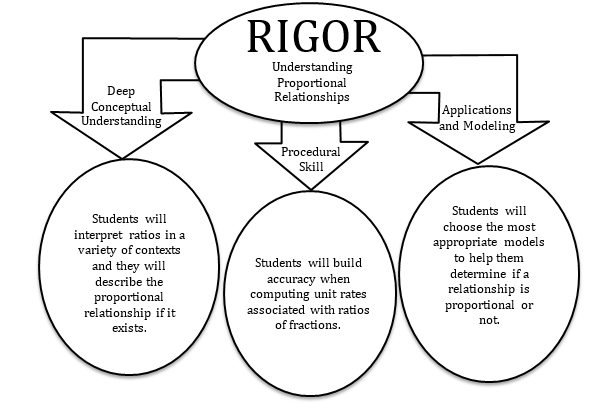
In school, your child will…
- Reason about and compute unit rates associated with ratios of fractions, including ratios of lengths, areas, and other quantities measured in like or different units.
- Decide whether two quantities are in a proportional relationship.
- How can you determine if the number of gallons needed is proportional to the number of days?
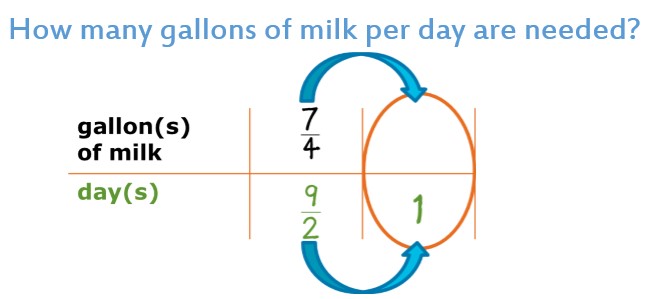
- Represent proportional relationships by equations.
- Explain what a point (x, y) on the graph of a proportional relationship means in terms of the situation.
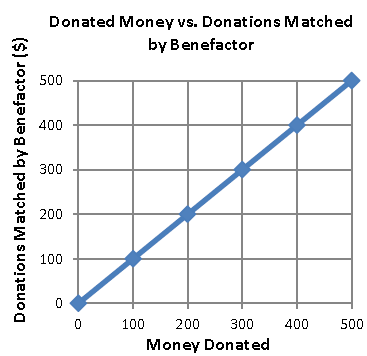
- Explain how the graph shows or does not show the two quantities being proportional to each other.
- What does the ordered pair (0, 0) represent in the context of the problem? (300, 300)?
At home, your child can…
- Determine the amount of ingredients needed when modifying recipes.
- If our recipe calls for 2 1/2 cup of flour for every 3/4 cup of brown sugar, how much flour is needed if we used 1 cup of brown sugar?
- Determine the unit price of an item at the grocery store.
- If a 32 oz. bottle of Gatorade costs $0.88, what is the price per ounce?
- Decide whether two quantities are in a proportional relationship.
- the price of a movie ticket compared to the age of the person
- the number of hours worked and the amount of money earned
Additional Resources
- Rate problems using fractions (video tutorial)
- The Better Buy with Unit Price (video tutorial)
- Unit prices: which is the better buy?
- Analyzing proportional relationships in a graph
- Analyzing and identifying proportional relationships
*Additional Practice links support C2.0 content, but may use vocabulary or strategies not emphasized by MCPS.
Application of Proportional Relationships
Students will be able to...
- Solve problems involving scale drawings of geometric figures.
- Identify the constant of proportionality (unit rate) in tables, graphs, equations, diagrams, and verbal descriptions of proportional relationships.
- Represent proportional relationships by equations.
- Use proportional relationships to solve multistep ratio and percent problems. Examples: simple interest, tax, markups and markdowns, gratuities and commissions, fees, percent increase and decrease, percent error.
- Understand that rewriting an expression in different forms in a context can shed light on the problem and how the quantities in it are related.
*Instructional videos in the hyperlinks above are meant to support C2.0 content, but may use vocabulary or strategies not emphasized by MCPS.
The Common Core State Standards require a balance of three fundamental components that result in rigorous mathematics acquisition: deep conceptual understanding, procedural skill, and mathematical applications and modeling.
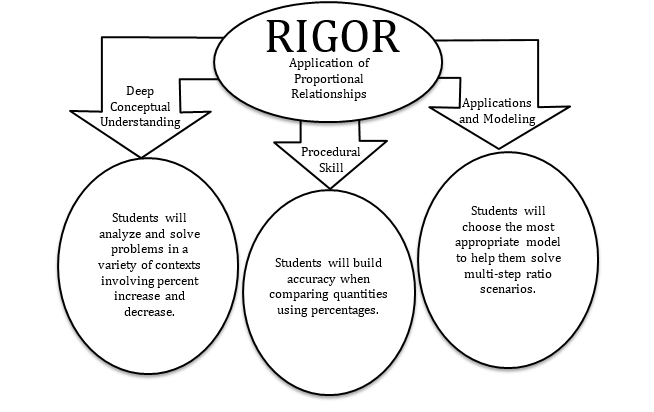
In school, your child will…
- Solve problems involving scale drawings of geometric figures, including computing actual lengths and areas from a scale drawing and reproducing a scale drawing at a different scale.
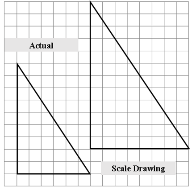
- Represent proportional relationships by equations.
- (0.12)s = 6 and 12/100 = 6/s, where s represents the total number of students.
- Use proportional relationships to solve multistep ratio and percent problems.
- Understand that rewriting an expression in different forms in context can shed light on the scenario and how the quantities in it are related.
- 15% gratuity on a $30 meal.
- 0.15 x 30 = g, where g is the amount of the gratuity
- 30 (1 + 0.15) = t, where t is the total amount (meal and gratuity)
At home, your child can...
- Interpret the scale on a map when planning an upcoming trip. Use the given scale to estimate the distance of your trip.
- If the trail we want to hike is 2 inches on the map, how can we use the scale to determine the length of the trail in miles?
- Determine the amount of tax that will be due when grocery shopping.
- If the subtotal of the grocery bill for the week is $150.62, and MD State sales tax is 6%, what is the total bill?
- Determine the amount of a posted discount and calculate the new price.
- Determine the final price of an item after applying a given discount and sales tax.
- Determine the gratuity amount when eating out.
Additional Resources
- Solve ratio and percent problems using bar models (video tutorial)
- Find the percent of decrease: using a proportion (video tutorial)
- Find the percent of increase: using a proportion(video tutorial)
- Calculate percent increase and decrease in context (video tutorial)
- Simple Interest Game (game)
- Math at the Mall: A real world math adventure game (game)
- Should I buy the BIG one?
- Cheesy Goldfish crackers
- Grade 7 Standards Unit 1 Topic 2 Application of Proportional Relationships (flexbook)
*Additional Practice links support C2.0 content, but may use vocabulary or strategies not emphasized by MCPS.